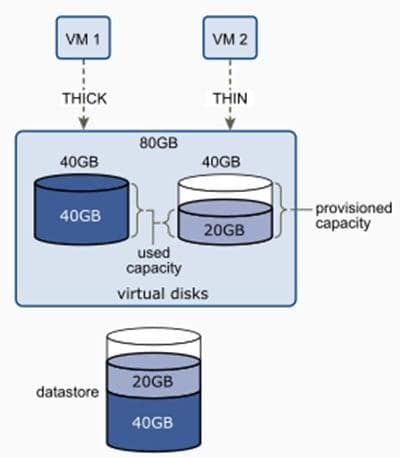What Is Server Management?
Server management is the list of tasks that need to be done to guarantee the correct performance of different types of servers in a network. It requires IT professionals to access hardware and software that integrate the server in order to perform the required maintenance, updates, and monitoring.
The activities related to web server management can vary depending on the type of server. These can include running the servers and monitoring all activity and issues as they occur. They can also include backing up server systems and data, providing statistics about the applications so the administrators can evaluate performance, etc.
How Does Server Management Work?
How server management works depends entirely on the type of server. Virtual servers require software updates, but the company providing the service usually maintains and monitors all the hardware. A physical device, on the other hand, will require both hardware and software monitoring, usually by the same person doing server management.
Hardware Management
A computer is made up of a set of components. This is no different for servers. The most common components are the central processing unit (CPU), random access memory (RAM), power source, hard disk, etc. which are all connected through a motherboard. Hardware management includes monitoring these resources individually to avoid overtaxing the available resources.
Software Management
Software also requires monitoring to ensure its optimal performance. This includes knowing what software is installed as well as what programs and applications are constantly running vs which are not. This also includes installing updates for the software (when available) based on the current system resources.
Who Needs Server Management?
Any company that has servers (physical or virtual) needs server management. It can be either a direct or indirect need. The difference also relies on the type of server. A customer in a shared hosting or managed virtual server hosting plan is an exception, as the host or third-party service providers take care of server management.
For virtual private servers, there is a mixed need. The hardware remains under the control of the third-party provider, but the software can be partially or completely managed by the customer. That’s a key difference between managed vs unmanaged VPS.
Small businesses with just an online catalog, extensive social media apps that require server clusters for scale, or organizations that only need a VMware hosting plan to run virtual machines can benefit from server management as well.
How To Manage Servers
Web server management activity starts with the base configuration of the server, specifically for first-time use. This can include the hardware setup (in the case of physical or hybrid servers), operating system installation, and installing the applications and programs needed to run the server.
With a server up and running, the next step is monitoring all activities happening on the server.
Internal vs External Server Monitoring
Depending on the organization’s specific needs, server management can be taken care of internally or externally. Let’s say the company has dedicated on-premises servers. An in-house technician (or IT department) can handle the initial setup and monitoring. After that, the company can either continue to handle everything, or they can hire a third-party company to monitor the server’s functioning and performance.
When the servers are on the cloud or hybrid, the management is usually hybrid as well or handled completely by an external IT technician or team. Knowing the difference between cloud servers vs physical servers can help you make a better-informed decision on what server management strategy is best for your organization.
On the other hand, external monitoring can also refer to software that remotely monitors the server activity and uptime while being managed by an internal team. An in-house technician can still monitor the servers from wherever they are located.

Server Management Basics
The activities involved in server management can be different based on the server type. Here are the most common ones:
Server Provisioning
When the organization is going to set up its first server or network, the first thing is to set up the server(s) in question. This can include assembling some parts of the server and installing the operating system that will control the server.
After the setup, both the software and hardware will need to be configured. This is mostly done in the operating system to identify the available components and be prepared to integrate with the software that will complement its functioning.
Performance Monitoring
Performance monitoring refers to logging how all the components and software are performing through the day-to-day operations. This includes checking for any downtime, unexpected issues, etc.
Updates
From time to time, server software (including the operating system) receives updates to add new features, improve the existing features, fix issues that may arise, etc. Keeping the software up to date is an essential part of server management.
Server Security
In the same updates mentioned above, you may find security fixes. Also, it is important to install security monitoring programs to confirm that there isn’t a breach in your server. These can result in a data leak, unwanted users, etc.
Backup & Restoration
Lastly, it is crucial to keep your system backed up with several restoration points. If an unexpected outage happens, it is better to be safe than sorry. With backups in place, you can restore your data and track down the cause of the issue.
If you are wondering how to manage servers, there are tools that can aid you. These are mostly software programs that help monitor the server performance, activities and issues, updates for the installed software applications, performing backups, etc.
These tools are a great help to avoid checking each aspect of the server manually.
Some of the most relevant tools for managing servers are:
- Server Density: An intelligent web services security platform and proactive monitoring tool for securing on-premises and cloud-based servers. It covers Linux and Windows servers, AWS, and Azure-based cloud servers.
- Checkmk: An IT Infrastructure monitoring software for Linux-based:
- Applications.
- Networks.
- Cloud infrastructures.
- Containers.
- Storage.
- Databases.
- Environment sensors.
- Servers.
Checkmk is developed in Python and C++ and is available in both free and paid versions.
- Zabbix: A free system monitor that tracks CPU activity, memory, I/O error rates, disk space, fan status, general temperature, and power supply performance on your servers. It is available for a wide range of operating systems like Windows, Debian, CentOS, Oracle Linux, Rocky Linux, Red Hat Enterprise Linux, Raspberry Pi OS, and others.
- Server Manager: Windows-based server management console that helps IT technicians manage and monitor servers, no matter whether these are on-premises or cloud-based. It is integrated into the Windows Admin Center.
- Nagios: An open-source server tool that monitors server and network performance. Both free and paid options are available, and the paid option offers a free trial. It is available for Linux and Windows.
- Ganglia: An open-source and BSD-licensed tool for managing servers specially designed for high-performing clusters.
Advantages of Server Management
You can find outstanding benefits with server management:
- Reliability: Your business relies on the servers performing properly and the monitoring being as accurate as possible. With on-call technical support and assistance from a certified expert, your environment remains stable.
- Effectiveness: Effective server management means replacing necessary hardware before failure and backing up your data efficiently.
- Security and peace of mind: Server management provides security in knowing that software updates and patches are completed.
- Cost savings: Effective management of your server means that your overall maintenance costs remain low.
Disadvantages of Server Management
Drawbacks in server management are more specific on a case-by-case basis. There isn’t a real disadvantage in server management because, in the end, if your organization relies on servers or a network, you need server management.
However, there are cases where you may not benefit from internal server management. You may have an in-house technician or IT department, but you need to make sure they have the latest training, the best tools with licenses, etc. With external server management, you don’t need to worry about these things.
Does Your Business Need Server Management?
Server management is a complex but essential process for running your network smoothly. By understanding the basics of server management and implementing the right tools, you can keep your business safe and secure.
Choosing any of Liquid Web’s managed hosting plans awards you full server management included completely at no additional cost to you. This means you get a team of experts monitoring your server with the best tools in the industry, top-of-the-class server resources, and unbeatable technical support.
Liquid Web offers a 100% network and power uptime guarantee and a 1,000% remedy for any downtime incurred.
The Most Helpful Humans In Hosting® are some of the best support technicians, system administrators, and server managers on the planet. Contact us today.





